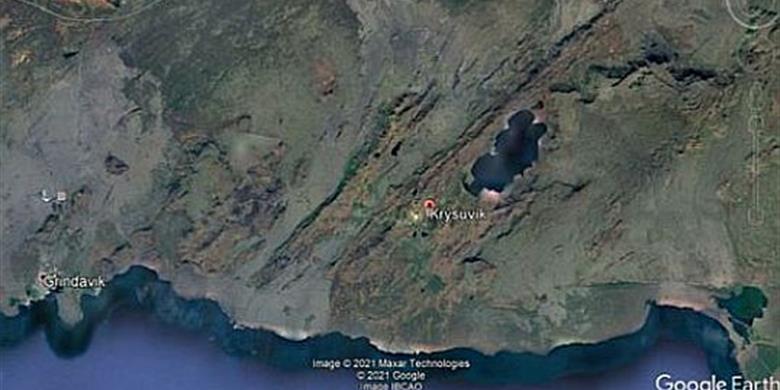Krýsuvík volcanic area, Iceland
Update 22 March 2021
After weeks of activity and tens of thousands of earthquakes, Iceland's Fagradalsfjall volcano on the Reykjanes Peninsula erupted late on 19 March. The eruption so far has been relatively small in Icelandic terms, but scientists from the Icelandic Meteorological Office and international volcano hazard programmes have been monitoring it constantly measuring not only earthquakes in the area as the magma pushes through, but also gas plumes and inflation and subsidence of the surrounding area.
The eruption was not explosive and occurred in an area that, although it is near the airport, is not populated. there is only a low level threat to air travel and residents in SW Iceland have been advised to keep windows closed and stay indoors due to the gases.

Fagradalsfjall volcano. Credit: Halldór Björnsson, Vedurstofen
15 March 2021
Iceland is renowned for its ongoing earthquakes and volcanoes,
but the past few weeks have seen increased levels of activity on the Reykjanes
Peninsula. Large swarms of tens of thousands of earthquakes per day started in late February including
strong earthquakes of up to magnitude 5.5.

Fig. 1 - Location of Earthquake
The
earthquakes represent ‘cracking’ of the crust as magma pushes through – it has
so far reached a depth of about 2km below the surface. It is expected that the
magma will reach to the surface and erupt between Mt. Fagradalsfjall southwest
of Mt. Keilir.

Fig. 2 - Image: Icelandic Meteorological Office, www.vedur.is
These mountains are part of Krýsuvík
volcanic area. Unlike other volcanoes, this is not a cone shaped mountain but
is a fissure swarm (series of linear ridges on the surface that sometimes
rupture) about 50km long and only about 400m above sea level. Thanks to the volcanic
system in the area, it is known for its high-temperature geothermal heat,
manifesting as hot and altered ground with mud pools, fumaroles (where hot
volcanic gases are released) and is a popular tourist attraction.

Fig.3 - Krýsuvík volcanic area,
25km S-SW of Reykjavik. Image: Google Earth

Fig. 4 - Fumeroles at the Krýsuvík area. Image: Evgenia
Ilyinskaya
The volcano hasn’t erupted since the 12th century
and previous activity has been effusive basaltic eruptions producing lava flows
from less than 1km3 to larger eruptions that reached the sea. Historically,
there have also been minor tephra deposits – these are fragments and rock and
ash that settle to the ground to form layers.
The volcanic and earthquake activity in Iceland is
constantly monitored by the Icelandic Meteorological Office who send regular updates and alerts to the
public and other agencies. Since the 2010 eruption of the Eyjafjallajökull volcano
and the impact on air travel, this alert system has been upgraded and expanded
with alerts now going to international partners including GSI. Dr Brian
McConnell receives these alerts and coordinates with Ireland’s emergency
response group if there is any potential threat to Ireland.
Mt Etna, Sicily
Colleagues in the Institute for Geophysics and Volcanology
(INGV) in Sicily have also been busy lately monitoring the recent eruption at
Mt Etna. Mt Etna is a much more active volcano with regular eruptions
attracting tourists to the area. This is a more traditional cone volcano with
most eruptions from a central caldera with spectacular lava fountains and ash
clouds several kilometres high.
Both volcanic areas are carefully monitored by
geoscientists on the ground (e.g. seismic activity, gases, composition of the
lava) and from remote sensing data collected by drones, aeroplane and satellite
data.

Fig. 5 - Image of INGV scientists measuring activity at Mt Etna,
February 2021, image Boris Behnke (INGV)
For more information please contact Dr Aoife Braiden aoife.braiden@gsi.ie or Communications
manager Dr Siobhán Power siobhan.power@gsi.ie
_______________________
To follow activity at Mt Etna, follow INGV in Sicily http://www.ct.ingv.it/ @INGVvulcani
To follow activity at Icelandic volcanoes and current levels
of activity follow the Icelandic Met Office https://en.vedur.is/ @Vedurstofan and www.icelandicvolcanoes.is